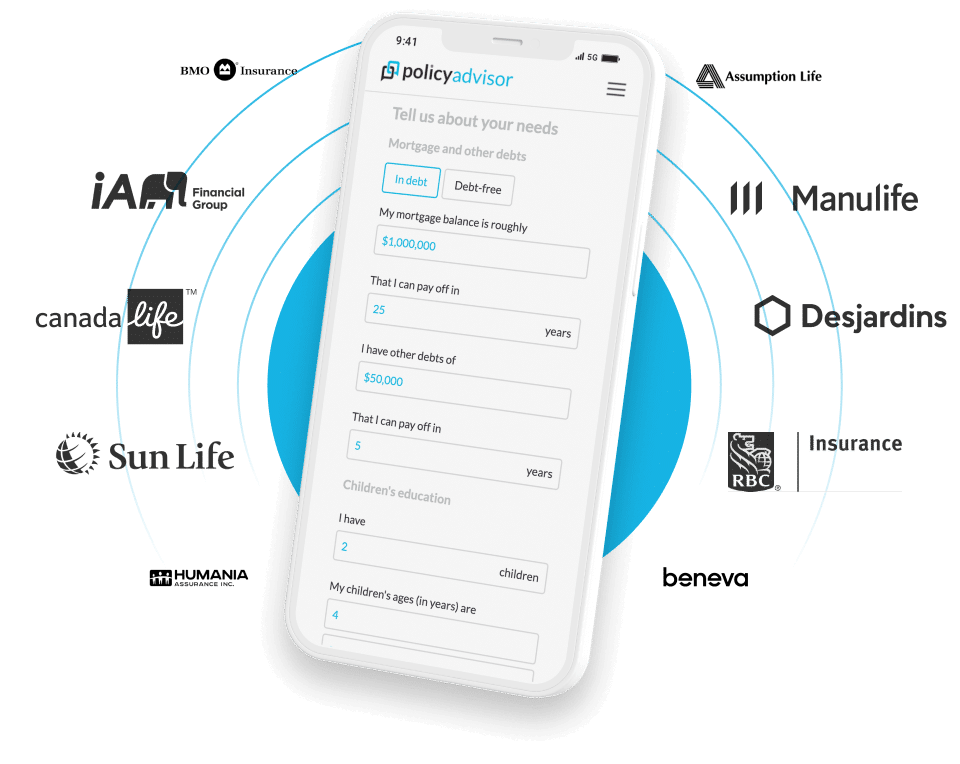
Although the process takes some time and might be expensive, setting up a trust can provide numerous benefits. Often, a trust can help plan wealth transfers from you to your children or allow you to manage your property in special ways. A trust fund is also an effective way to provide some financial security to your loved ones.
This article explains more about trusts, whether you should use one, how to set a trust up, and many of its benefits.
What is a trust?
In the simplest terms, a trust is a way for someone to own something. It allows one person, known as the “ultimate owner”, to transfer something(s) they own to another person, known as the trustee.
But although the trustee becomes the legal owner, they are actually not the person who is supposed to benefit. That person is the beneficiary, and the trustee is instead supposed to use their legal ownership of the transferred property to benefit the trust beneficiary.
Trusts are also sometimes called trust documents or trust settlements.
How does a trust work?
When creating a trust, you appoint a trustee, who then manages and distributes your assets/property to your beneficiary. The trustee is responsible for managing your assets/property according to the terms and conditions of the trust. They’re also supposed to act with the beneficiary’s best interest in mind. In Canada, trustees are often legal entities such as trust companies.
Canadians use trusts for a variety of purposes. For example, family trusts are often set up to help with estate planning or protection of assets. This is where you decide, while you are living, what will happen with your belongings when are no longer here. A trust is an easy way to help make sure your belongings are split up according to your wishes.
In the context of life insurance, a trust can actually receive your life insurance death benefit tax-free. Your trustee receives the legal title of the death benefit, and your beneficiary receives the beneficial title.
How long does a trust last in Canada?
How long a trust lasts depends on the Canadian province. For most of Canada, trusts last for 21 years. At that point in time, it will be assumed that the trust got rid of any capital property — such as by being distributed, sold, transferred at fair market value, etc. This is the case for both types of trusts. It’s typically referred to as the 21-year-rule.
However, this doesn’t mean that the trust will automatically end after that period of time. Rather, it just means that any capital gains have to be acknowledged and the trust must be reassessed at that time.
For British Columbia, that period is 80 years.
What are the types of trusts in Canada?
There are two main categories of Canadian trusts: testamentary and inter vivos.
Testamentary Trust
This type of trust is created upon the death of a person. It’s usually established by a will or by court order. Some examples include:
- Lifetime benefit trusts: financially support a family member who has a mental disability.
- Spousal or common law partner trusts: ensure a surviving spouse or common-law partner will receive all of the trust’s income.
- Qualified disability trusts: provide funds to a disabled beneficiary under certain conditions.
Inter Vivos Trust
A trust that is set up during one’s lifetime. Fittingly, this type of trust is also called a “living trust” or an estate trust. Effectively, it’s anything that’s not a testamentary trust. Most trusts fall into this category, including:
- Revocable trusts: can be withdrawn by the person who created the trust.
- Alter ego trusts or joint partner trusts: similar to spousal trusts, these allow a trust beneficiary to receive all of the trust’s income. The difference is that alter ego trusts allow for just one living beneficiary spouse, while joint partner allows for the beneficiary and their spouse.
- Mutual fund trusts: act like an investment portfolio, but usually have a higher tax rate.
- Public trusts and public investment trusts: types of mutual fund trusts that are on a public stock exchange.
- Real estate investment trusts: another type of mutual fund trust, but for real estate or other types of property assets.
- Retirement Savings Plan (RRSP) trusts and Registered Education Savings Plan (RESP) trusts: provide a way to save for retirement or education.
- Insurance segregated fund trusts: a life-insurance-based investment fund offered by life insurers. Read more about the biggest Canadian life insurance companies that offer segregated funds.
All types of trusts can be classified into one of these two categories. A life insurance trust is one where the trust property is the life insurance benefit. Because the benefit requires a person’s death, a life insurance trust is most often testamentary.
Is setting up a trust a good idea?
Trusts let you control your assets in a unique way. You can choose how money is spent or how a property is used even after your death. A properly-executed, valid trust can also protect your beneficiaries and transfer property in a tax-efficient manner.
Usually, parents, grandparents, aunts, and uncles set up a family trust for beneficiaries such as their children, grandchildren, nieces, and nephews. It’s an important part of estate planning that sets up a seamless transfer of assets.
Some of the most common reasons for setting up a trust include:
-
Leaving life insurance to minor children
Minors cannot usually receive a life insurance policy’s payout. If left to a minor, a court may appoint someone to manage the money until the minor reaches the age of majority. Leaving the death benefit in a family trust could create more certainty. The trustee could then administer the funds to minor beneficiaries once they reach a certain age. The trustee is also legally inclined to manage the trust property according to your trust arrangement. Many informal trusts (IFT) are used to provide for minor children.
-
Establishing a spendthrift fund
If you have a spendthrift child, you might be concerned about leaving them with a large amount of money upon death. A spendthrift fund allows you to determine how, when, and for what purpose the beneficiary can use the money. A trustee would then administer the assets to the beneficiary based on your trust document.
-
Asset protection
Moving assets into a family trust may shield property from the claims of creditors. So, assets in a trust may be immune from third-party claims if a trust beneficiary loses a lawsuit or falls into debt, for example.
-
Saving on taxes
Many Canadians create a trust for tax purposes. You can use trusts to reduce taxes during your lifetime or after your death. Strategies like estate freezes or multiplying lifetime capital gains exemptions use trusts to minimize tax liabilities for some individuals.
Generally, anyone with a significant amount of assets may benefit from a trust. Speaking with an accountant or legal counsel about your situation is the best way to understand if a trust could help you and your family.
How can trusts reduce taxes?
Trusts can help lower taxes by leveraging the tax obligations of each beneficiary. This is especially the case if your trust splits income with family members.
It works like this: Any income in either type of Canadian trust is taxed at the highest personal marginal rate. But in most cases, a trust beneficiary is in a lower tax bracket than the trust or the person who started the trust. Because of this, the beneficiary has a much lower tax burden even after the trust assets are transferred to them. In this way, family trusts can provide significant tax benefits.
Trusts often come into play in the following tax plans:
-
Income splitting
A trust lets you divide income among family members and among trust beneficiaries. This step reduces the overall tax liability because each beneficiary has a lower marginal tax rate than a single person receiving all the taxable income individually.
-
Access to multiple Lifetime Capital Gains Exemptions
A Lifetime Capital Gains Exemption (LCGE) allows business owners to exempt capital gains tax up to a regularly adjusted limit on selling part of or their entire business. Accountants and tax lawyers often use one or multiple trusts to sell a company that uses the business owner’s LCGE as well as their family members’.
-
Reduce estate taxes
Estate freezes, insurance-tracking shares, and other estate planning strategies often use trusts to reduce the amount of capital gains tax and probate costs you pay at death. If you’re a business owner or high-net-worth individual, this allows you to transfer wealth to children or other family members in the most tax-efficient way possible.
Read more about how life insurance, probate, and wills work in Canada.
The relationship between trusts and Canadian taxation is highly complicated. It’s vital you speak to an experienced tax accountant or lawyer who can best guide you about the various tax rules and advise if a trust would be beneficial for you.

How to set up a trust in Canada
You can usually create a trust in four steps:
1. Draft an agreement
A lawyer or other legal entity drafts a formal trust agreement. This agreement states the names of trustees and trust beneficiaries, what the trust assets are, how the trustee will manage the assets, and how property is transferred into the trust. Other terms and conditions are also included, depending on the complexity.
2. Establish the trust’s property
The settlor makes an irrevocable donation into the trust, which becomes the trust property. It can be money, a piece of land, a cottage, gold, and more.
3. Open a trust account(s)
A bank account is usually opened in the trust’s name.
4. Complete the process
A to-do list is executed — i.e. moving money into trust accounts or changing the name of a property owner. You should take these steps with the guidance of a tax practitioner (lawyer or accountant) to ensure there are no adverse tax consequences.
How long does it take to set up a trust?
You can generally expect the average trust to take two to four weeks to execute. But the time you need to set up a trust depends on the complexity.
Some agreements may take a lawyer longer to draft. Your trust might also require the expertise of other professionals. All this takes time.
Once you speak with a lawyer and define your goals and strategies, you can better understand the process’ length.
How much does it cost to set up a trust?
Similar to the amount of time to set up a trust, the cost is bespoke. It depends on your trust’s complexity, overarching goal, the lawyer’s experience, etc. In general, setting up a Canadian trust costs no less than $1,500 as a minimum.
But keep in mind that a legal professional generally charges you on a per-hour basis. Different lawyers also have different hourly rates. At an initial meeting, the legal professional can likely provide you with an estimate of how much the entire process will cost.
A trust is a powerful tool that helps Canadians plan for death, reduce taxes, and manage assets. You will need a legal professional to help you navigate all the applicable trust laws and legal frameworks. But the financial benefits and asset protection it provides you and your family are usually worth the legal fees.
Many Canadians set up trusts to protect their beneficiaries and ensure their assets are managed properly after they die. Setting one up is just a matter of meeting the criteria and following a series of relatively easy steps.


 1-888-601-9980
1-888-601-9980


